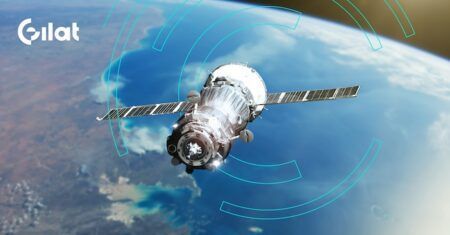June 8, 2017 – While Elon Musk has been dominating headlines in recent years with his disruptive thinking, let’s not forget Paul Allen, co-founder of Microsoft, billionaire philanthropist, sports fan, technical genius – and possibly the next big influencer in inflight connectivity. His latest big idea has just broken cover: Stratolaunch, an aircraft intended to provide reliable and routine access to low Earth orbit, which could represent a great asset to companies involved in the connectivity industry, and an opportunity for new companies seeking to enter the sector. The aircraft could offer a reliable and viable way to deploy satellites – an alternative to occasionally complex and unpredictable ground-launched rockets.
Stratolaunch is a big idea – quite literally huge – and when its 28 wheels rolled out of the hangar in Mojave, California ahead of the start of its test schedule, the sheer scale of the twin-hull aircraft became evident. Stratolaunch has the world’s largest aircraft wingspan, spanning 385 ft (25ft longer than an NFL field), and it measures 38 ft from nose to tail and stands 50 ft tall from the ground to the top of the tailfin.
Above: The prototype Stratolaunch breaks cover in Mohave, California. That is no ordinary hangar: it has been specially built for the project and features the world’s widest door
Weighing in at approximately 500,000 lbs, the six-engined aircraft is designed for a maximum takeoff weight of 1,300,000 lbs, meaning it is capable of carrying payloads up to approximately 550,000 lbs. The initial plan is to carry a single ‘Orbital ATK Pegasus XL’ delivery vehicle to the approximate cruising altitude of a commercial airliner, whereupon the rocket would separate from the carrier aircraft, ignite its own engines and complete its climb into orbit, where it would then deploy small satellites. The next stage of development would be to carry up to three Pegasus vehicles in a single sortie, while Stratolaunch is also exploring further flexible and streamlined ways to send satellites into orbit.
Above: The reusable Stratolaunch aircraft makes satellite launches look simple and removes many variables from the process
Paul Allen explains the benefits of the Stratolaunch project: “First, with aircraft-like operations, our reusable launch platform will significantly reduce the long wait times traditionally experienced between the construction of a satellite and the opportunity to launch it into space.
“Second, because Stratolaunch is designed with a flight radius of up to 1,000 nautical miles and can launch from different runways, it will offer scientists, businesses and space entrepreneurs much greater flexibility, such as the potential to evade local weather problems that often impose untimely delays on traditional vertical rocket launches.
“Third, with shorter wait times, greater flexibility and more missions per year, we will be able to lower costs and increase opportunities to put small satellites into LEO. And when such access to space is routine, innovation will accelerate in ways beyond what we can currently imagine. That’s the thing about new platforms: when they become easily available, convenient and affordable, they attract and enable other visionaries and entrepreneurs to realize more new concepts. And in a world filled with great challenges and opportunities, we should be making this transformation prospect easier.”




